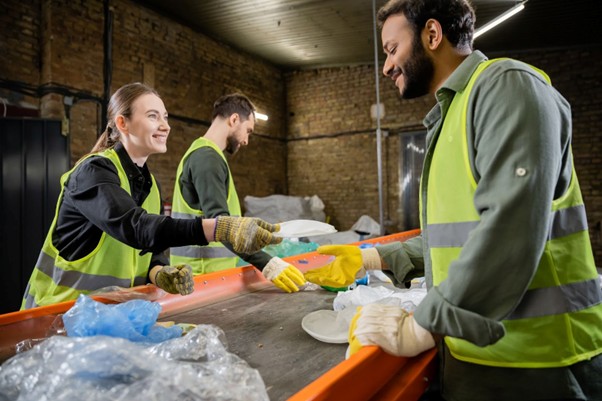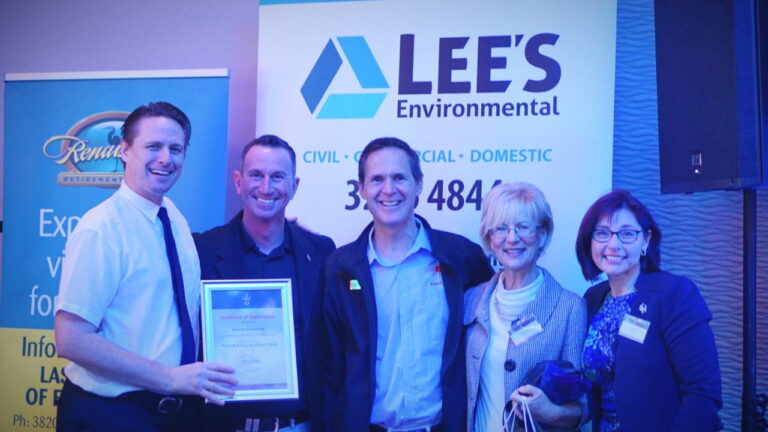Waste management encompasses any processes related to the collection, treatment, and disposal of refuse in a safe and efficient manner. The field is broad as there are many types of refuse and many ways to dispose of it.
There is a need for effective waste management systems, as the garbage does not simply vanish. Instead, waste remains suspended in an unorganised, stagnant state, which is often detrimental to human life and our surroundings when allowed to decompose by itself.
What kind of systems do exist, how did they come into being, how can one as a business or an individual augment their effectiveness, and what modifications will allow me to achieve better results in my waste handling processes?
This blog post aims to answer these questions. Although its major focus is on the Australian systems, much of what this blog discusses is relevant to the rest of the world.
Explaining Waste Management
Waste management is at its core, a streamlined process which organises the retrieval of various forms of garbage and trash through sorting, disposal, reduction, recycling, reusing, and waste prevention. These five systems of waste management: sorting, disposing, reducing, recycling, reusing, and preventing, guarantee that materials no longer useful to a person are handled in a way that is safe for public health and the environment.
Sorting Waste:
Waste sorting is the process of dividing waste into segregated components. This can be the separation of metals from alloys or even precious metals, plastics, and recycled materials as well as hazardous waste and non-hazardous waste.
Disposing of Waste:
The act of disposing of waste seems to be the least complicated method of handling it from every perspective, but this is far from the truth. Contemporary systems of waste management have numerous methods of disposal which stem from more sophisticated approaches and knowledge.
Reducing Waste:
One of the most astonishing methods of control is reducing waste. Most often than not, the best primary source is the company that deals with organising refuse. Their employees, under the right guidance, can operate at the design stage to modify the waste features that are designed to be incorporated.
Recycling Waste:
Recycling is one of the modern companies’ practices in effective and sustainable waste management. It certainly does get credit for being one of the better ways employed to stop landfills and dumpsites from filling up.
Reusing Waste:
Reusing involves repurposing materials categorised as waste into other uses, in contrast to recycling which refers to a process of converting one object for the use of another.
Utilising the services of waste technology companies can foster some creativity, and they can guide you.
Waste Audits:
Whether a business or an individual is aware of it, waste management systems are already in existence. Like any kind of logistics, looking after it is very important to the smooth and productive running of a business.
The best starting place is with Waste Auditing. So, do you want to have your waste management systems properly understood? Get a proper audit done by qualified waste management employing professionals like Lees Environmental.
What are the main objectives of Waste Management?
Waste management systems are very crucial because waste is a constant figure whether a person prefers or wishes. There is a need for proper systems if there is no waste being accumulated aimlessly.
This would not only be alarming but without proper measures, harmful gases and dangerous toxins would be released. This sheds light on why effective waste management is crucial for the sake of Earth’s beauty and safety.
Different Types of Waste
Waste management deals with a large pool of waste. It’s worth naming and defining some of the major types.
- Organic Waste. This refers to naturally forming waste without human-made chemicals and other hazardous materials. That being said, organic waste can be hazardous waste.
- Food Waste. This is all of the food scraps produced by households, restaurants, and other waste generation hotspots.
- Medical Waste. This refers to the waste produced in hospitals, laboratories, clinics, pharmacies, and other facilities that deal with medical or biological equipment.
- Household Waste. This includes everything produced in a household. It includes both liquid and solid waste. Single-use plastics are a major contributor.
The Waste Management Hierarchy
In which order does a waste treatment company prioritise different types of waste? The answer is a company employs the waste management hierarchy.
The waste management hierarchy is a theoretical model of concerns principles aimed at enhancing the effectiveness of both personal and organisational waste management systems, eliminating redundancy in the management procedures. Furthermore, it enhances eco-friendliness and minimises the creation of additional waste.
The waste management hierarchy prioritises resource recovery and holistic waste avoidance. Mostly, this covers lessening the negative effects on the environment during the production phase. If there is nothing to go into the landfill, then the activities surrounding it do not need to be as frequent in the first place!
Australia’s Waste Management
The waste management system in Australia showcases the country’s economic diversity. It includes the actions of the federal, state, and municipal governments in addition to private sector companies such as Lees Environmental.
Australia is working towards shaping the National Waste Policy and it generally tries to follow international benchmarks for effective waste management policies. It aims to address waste by classifying it into five actions – sorting, disposing, reducing, recycling, and reusing.
Development Over Time
Waste management practices, in basic forms, existed in Australia within the First Nations People settlements. A defining trait of waste is it materialises, irrespective of whether a management system exists or not. Humans in primitive settings understood this and incorporated waste management techniques into their daily activities.
With the European colonial settlers came a Europeanised form of waste management. Most of these moved in tandem with colonial society’s worldview of nature and their place within it.
In the second half of the 19th century, improvements in sanitation and other technologies viewed waste as an issue that required new solutions for waste services.
Emerging cities such as Sydney and Melbourne required solutions for effective waste management due to population growth.
Current Management System
Australia continues to improve its waste management practices in alignment with international standards. However, Australia also has some regional policies that deal with some of the challenges unique to this part of the world.
Although local, state, and federal governments manage the system, there is significant private sector involvement when it comes to waste materials and general waste management processes.
For example, Lees Environmental and other waste management companies ensure the smooth functioning of waste streams and fill in the gaps with private sector solutions when government oversight cannot provide adequate support for waste disposal.
International Relations
Australia does not generate waste in isolation nor does it operate independently of an ecosystem of waste-generating nations and multinational corporations. Therefore, Australia’s policies regarding waste management must adapt to international standards.
Moreover, there has been an increased global focus towards more sustainable eco-friendly solutions to waste management. This encompasses more than just minimising greenhouse gas emissions.
Many countries sign international agreements that aim for greener solutions to waste and other forms of rubbish to be termed green treaties. This shows an international effort geared towards striving to minimise gross waste produced.
The following agreements have been adopted by the Australian government:
Basel, Waigani, Stockholm, Rotterdam, Vienna, Montreal, Minimata, London, MARPOL
Possible Futures
How waste management systems evolve, or if they will at all, is a mystery, though some patterns can be deciphered from the past.
Moreover, it remains doubtful that initiatives to mitigate the impact of climate change will subside anytime soon. Suggested possibilities concerning Australia’s future waste management policy can be crafted to some extent.
Technology’s role in driving waste production as well as its management will almost certainly come to fruition. This subject has long remained at the crossroads of both producer and dealer.
The emergence of computer-based technology has fundamentally transformed the logic and strategy underpinning waste management. The potential benefits AI has in optimising numerous processes are finally being recognised. This is bound to impact waste management systems in the not too distant future.
Key Challenges for Waste Management in Australia
There are a number of challenges that waste management companies face in Australia. In many ways, the industry’s ability to overcome these challenges highlights its commitment to safe and effective waste management.
- Community Trust. Waste management companies across Australia need the trust and support of local communities.
- Recycling. Without recycling being common and practised, efforts to reduce total waste will be in vain.
- Education. Australian schools have a duty to educate young learners about safe and effective waste management solutions. This will help to develop a citizen pool of people who care about waste.
- Regulatory Compliance. Effective waste management can sometimes get bogged down by bureaucratic regulatory compliance, slowing down innovation.
- Local Markets. Without local markets doing their bit to engage waste management companies, the industry will not develop or grow into an effective business model.
CSIRO has a blog that unpacks many of these challenges.
Waste Management Initiatives
Waste management companies across Australia continue to develop their waste management systems in order to provide adequate and effective waste management.
A key feature of this has been improved efforts to curb climate change and greenhouse gas emissions from poor waste systems.
Whenever choosing a waste management company, be sure to take into account how their company fares against both local and international waste management laws and regulations, as well as their commitment to ethical and environmentally friendly practices.
Where Lee’s Environmental Come in
Lee’s Environmental, a division of Cleanway Group Pty Ltd, continues to provide the same high quality service expected from family-run companies to all its clients, whether a multi-million dollar project, or a one-off septic tank or grease trap pump-out & clean at a domestic residence.









